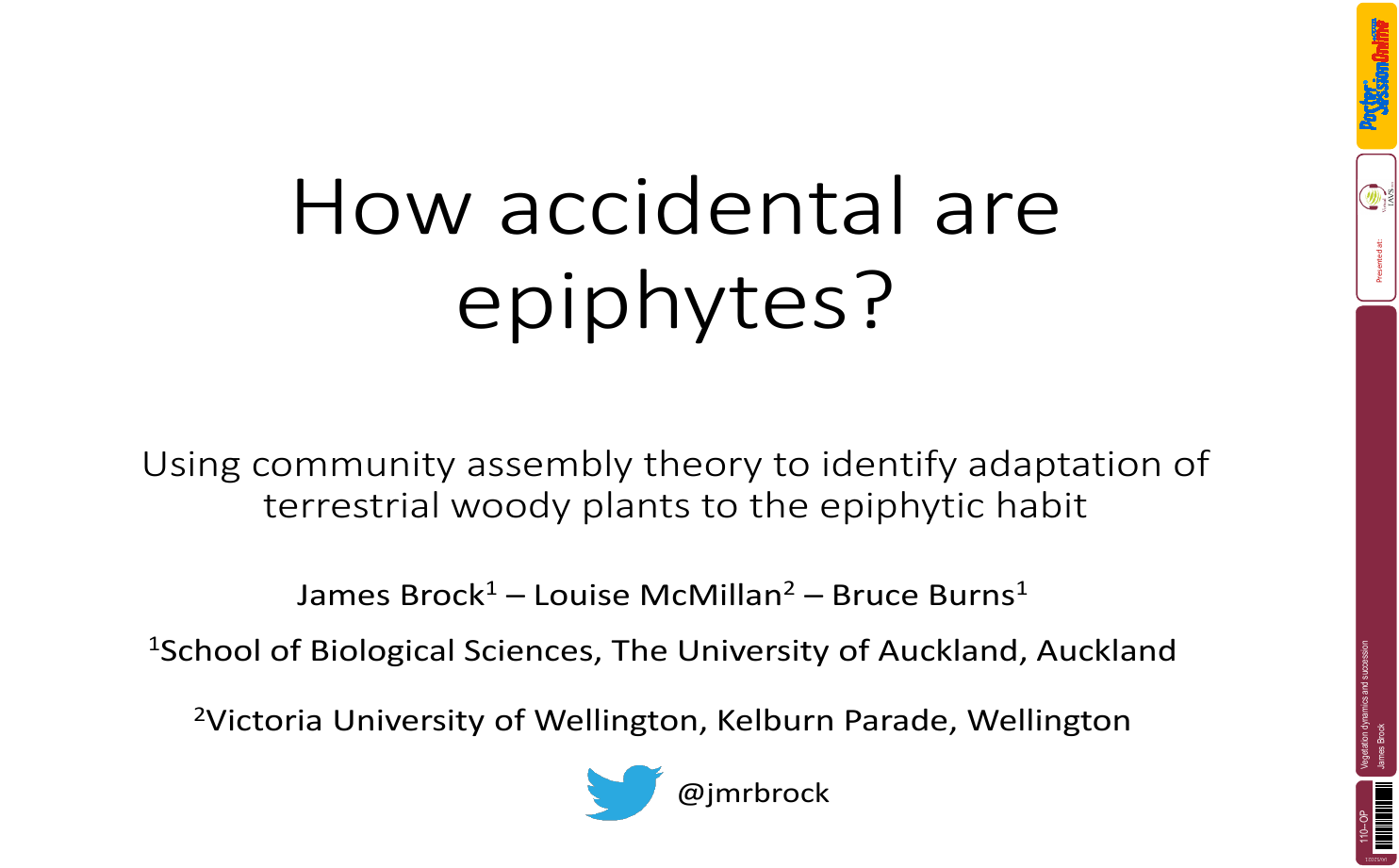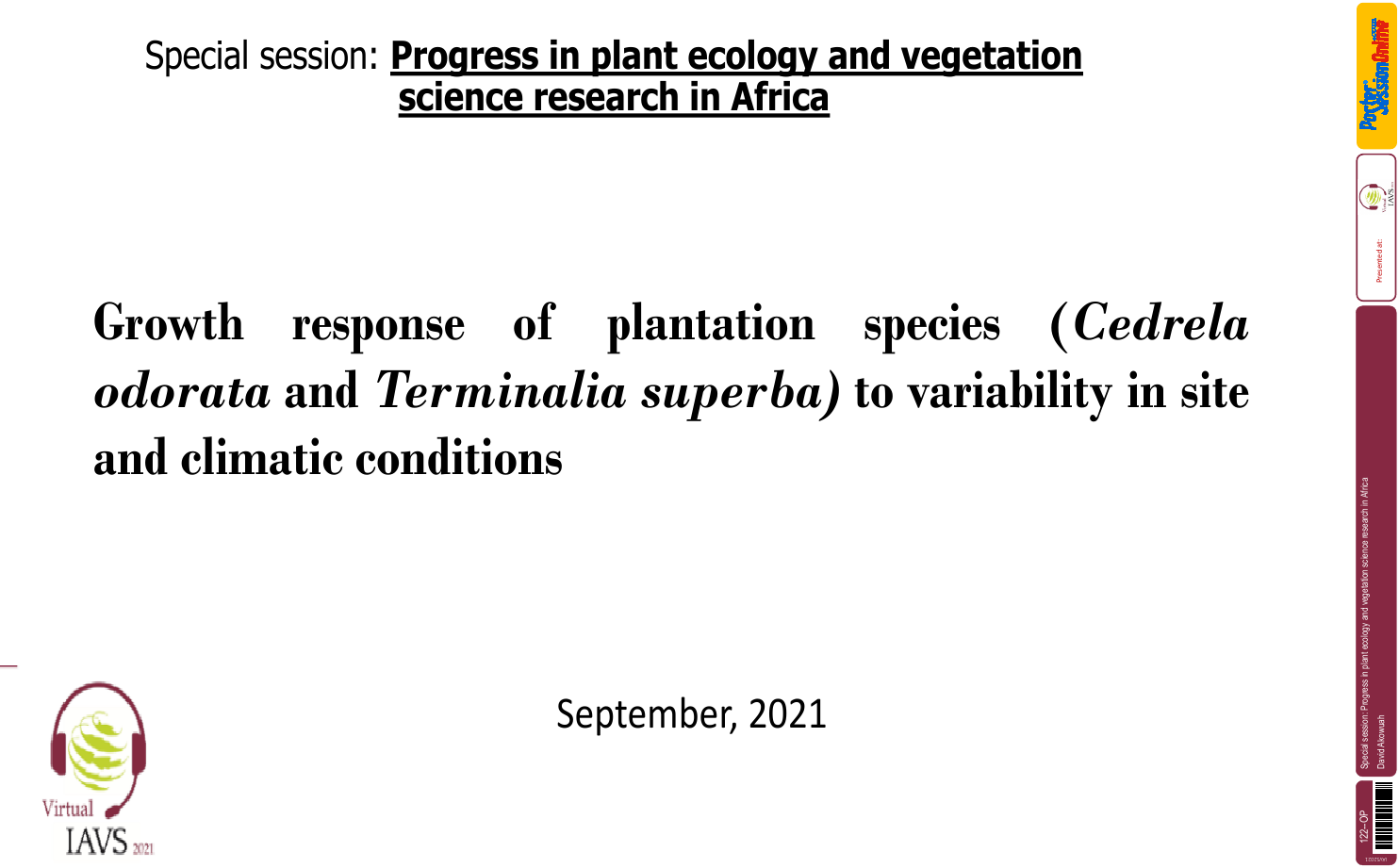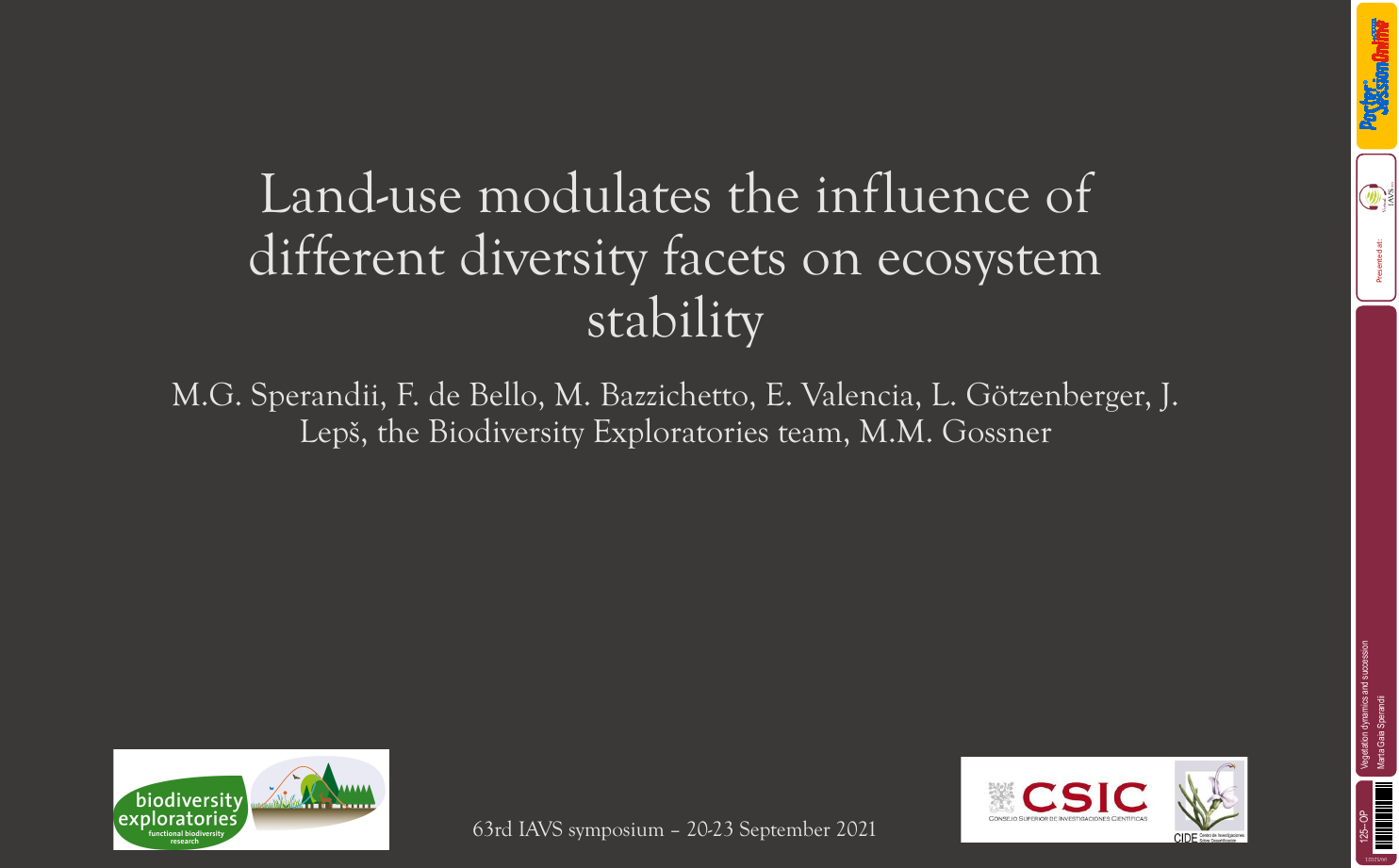| |
 |
|
 |
 |
 |

|
Poster: 110
Visits: 75
Title: How accidental are epiphytes? Using community assembly theory to identify adaptation of terrestrial woody plants to the epiphytic habit
Authors: James Brock , Dr Louise McMillanAssoc. Prof. Bruce Burns
Centre:
|
|
You must be registered to reply or comment.
|
|
HOW ACCIDENTAL ARE EPIPHYTES? USING COMMUNITY ASSEMBLY THEORY TO IDENTIFY ADAPTATION OF TERRESTRIAL WOODY PLANTS TO THE EPIPHYTIC HABIT
|
 |  | James Brock |
Thread initiator
Subspeciality
Reg: 9/8/2021 8:16:00 AM
|
 |
Comment# 1
|
I invite colleagues to open debate around the issues raised in my presentation, both those relating to research and to practice.
Comment added on 9/14/2021 10:25:00 AM
|
|
|
 |
| |
 |
|
 |  | Susan Wiser |
Subspeciality
Reg: 9/1/2021 10:47:00 AM
|
 |
Comment# 2
|
Hi James,
I am now finally getting a chance to catch up on watching presentations from the symposium. One or two a day is quite a nice break from the rest of my day and of course I have to watch all the NZ presentations. Great to see your ongoing work on tree ferns and epiphytes on them. I have two questions:
1) I don't understand your conclusions about the abiotic gradients. Why did you think your data was the reverse of your expectations in terms of drought tolerance and succession?
2) It is interesting how Pseudopanax arboreus seems to be so well adapted to the epiphytic lifestyle, especially since we also see it so commonly as a successional species. Do you have any ideas about why it should be so suited to being an epiphyte?
Thanks!
Susan
Comment added on 10/12/2021 6:11:00 AM
|
|
|
 |
| |
 |
|
 |  | James Brock |
Thread initiator
Subspeciality
Reg: 9/8/2021 8:16:00 AM
|
 |
Comment# 3
|
Hi Susan,
Thanks for your questions; likewise I am slowly working through many talks!
1. I realised that in my editing I'd removed the section where I'd explained the bit about succession and abiotic gradients. To answer your question - I figured that a) a tree fern trunk would be wetter at the base than at the top (flow-through, surface area, ground moisture etc.), and the surface is older at the bottom than at the top, drought tolerant species might occur at the top of the stem, and early-successional species would occur at the bottom. If we look at the gradient of taxa occurrence up the trunk what we have is the most drought tolerant at the base and the least drought tolerant at the top (an inversion of the expected - taxa ordering along a drought tolerant gradient as Lusk Laughlin 2017 N. Phyto.). The successional gradient of the taxa is reversed - Weinmannia at the base (oldest) instead of the top (youngest surface) with Pseudopanax arboreus and Coprosma grandifolia at the top.
2. I have been reading around the ecology of, and pondering the peculiar habit of Pseudopanax arboreus a lot over the last year and I'm not really sure I can give you anything concrete. The Araliaceae seem to be effective occupiers of the epiphytic niche in general, but why just this taxa? Establishing so high up is a definite light advantage in more mature forest, so being an epiphyte will definitely help this small tree get in in more mature stages. I think it would be a fascinating project to look at leaf and root traits across the small trees of NZ Araliaceae (and probably Violaceae) in both terrestrial and epiphytic habit to see what gives Pseudopanax arboreus the edge here.
Cheers
James
Comment added on 10/14/2021 7:08:00 AM
|
|
|
 |
| |
 |
|
|
 |
 |
 |
| You must be registered to reply or comment. |
|
 |
 |
 |
 |
 |
| Most viewed poster for this congress |
 |

|
Poster: 122
Visits: 528
Title: Growth response of plantation species (Cedrela odorata and Terminalia superba) to variability in site and climatic conditions
Authors: David Akowuah , Reginald T. GuurohMark Appiah2
Centre:
|
|
 |
 |
 |
 |
 |
| Poster most viewed in this topic |
 |

|
Poster: 125
Visits: 342
Title: Land-use modulates the influence of different diversity facets on ecosystem stability
Authors: Marta Gaia Sperandii , F. de Bello, M. Bazzichetto, E. Valencia, L. Gtzenberger, J. Lep, the Biodiversity Exploratories team, M.M. Gossner
Centre:
|
|
|
|